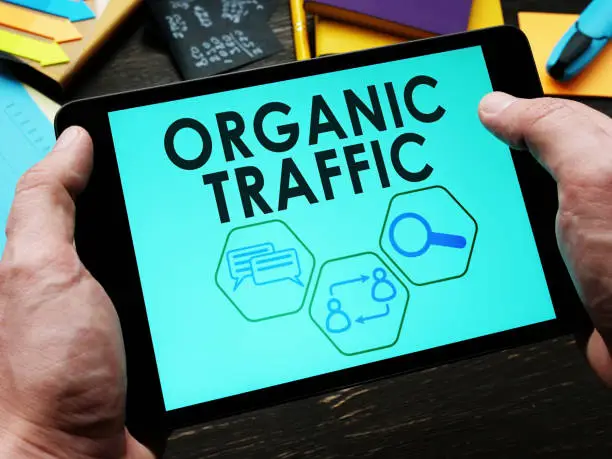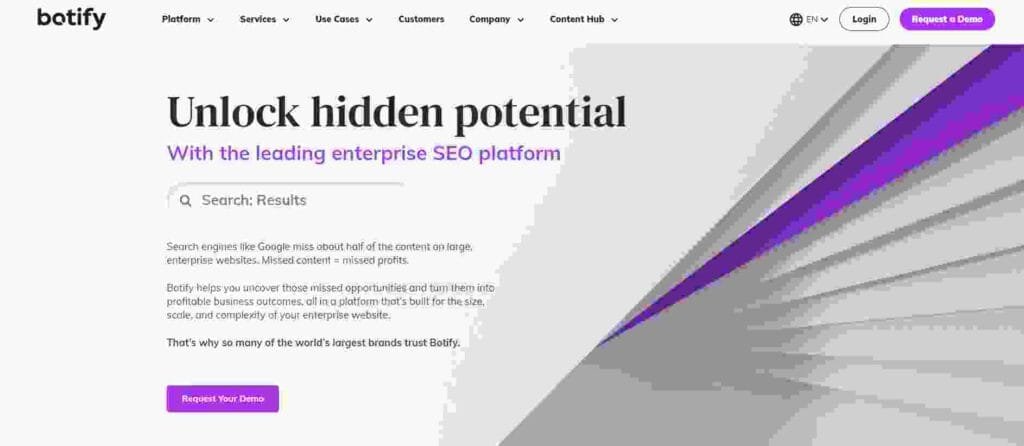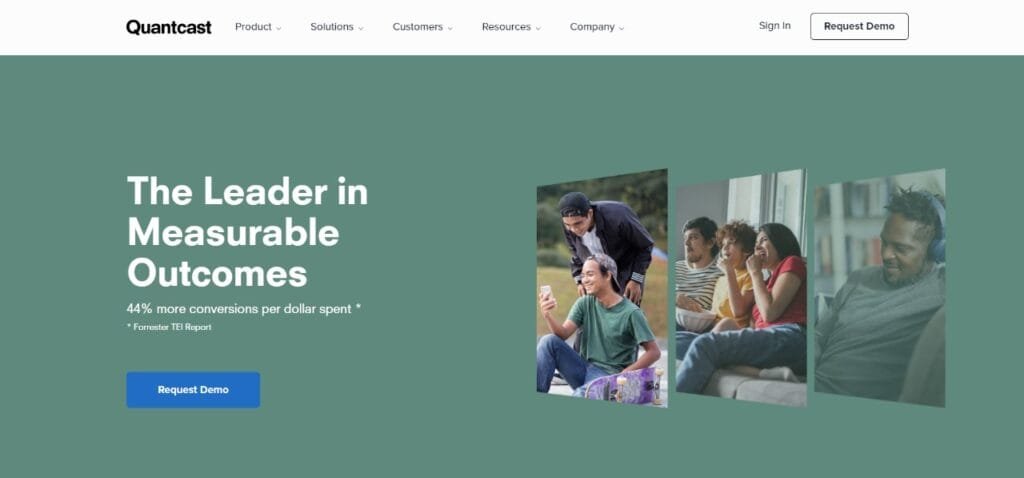In the fast-paced digital world, Search Engine Optimization (SEO) stands as one of the pillars of online marketing. Yet, despite its prominence, its value often remains ambiguously defined, especially when it comes to ROI (Return on Investment). Startups and seasoned businesses alike continuously grapple with understanding the precise impact of their SEO efforts.
You might wonder: “How much revenue has our SEO-driven content generated?” or “Is the financial investment into SEO yielding positive returns?”. These questions are valid and essential. After all, in business, what cannot be measured cannot be managed or improved.
Understanding and measuring the ROI of SEO becomes paramount not just for marketers, but also for stakeholders and C-level executives to validate the resources invested.
This guide aims to walk you through the intricate pathways of measuring SEO ROI, from its basic understanding to the tools and metrics that can provide you with a holistic view of your SEO’s financial impact.
Understanding the Basics of SEO ROI
SEO ROI refers to the return on investment from all your SEO efforts. Simply put, it’s the benefit (or return) you receive from the money, time, and resources you’ve invested into SEO.
This is not just confined to monetary returns; it also pertains to brand visibility, recognition, and trust.
The significance of SEO ROI transcends beyond just numbers. It’s about understanding if your SEO strategies align with your business goals and are driving the desired outcomes.

Challenges in Measuring SEO ROI
While the concept sounds straightforward, measuring SEO ROI is not without its challenges. The digital landscape is vast, with multiple touchpoints, making it difficult to attribute conversions solely to SEO. For instance, a user might first visit your site after clicking on a social media ad, return later via an organic search, and then make a purchase after receiving an email campaign. In such a scenario, to which channel do you attribute the sale?
Another challenge is the constantly changing nature of SEO. With regular search engine algorithm updates, what worked a few months ago might not yield the same results now.
Case Study: ‘Buffer’ – From Setting SEO Goals to Tracking ROI
Buffer, a social media management tool, offers a remarkable illustration of the SEO ROI journey. Initially, Buffer focused predominantly on content creation without a definitive SEO strategy. As the brand evolved, they integrated SEO, targeting specific keywords, optimizing on-page elements, and regularly updating content to align with search engine algorithm changes.
The results? A 400% increase in organic traffic in 10 months. By setting clear SEO goals and consistently monitoring their progress, Buffer could effectively track their ROI, leading to more targeted and result-driven efforts.
Setting Up the Right Tools for Tracking SEO ROI
Introduction to Google Analytics, Google Search Console, and Other Analytics Platforms
The foundation of any analytical journey begins with the right tools. Google Analytics, a free tool by Google, stands as the de facto standard for website analytics. It offers insights into user behavior, traffic sources, and conversions. Integrated with this is Google Search Console, which provides a deep dive into your site’s presence in Google search results – highlighting clicks, impressions, and more.
While Google’s suite of tools is comprehensive, other platforms like Adobe Analytics and Clicky bring additional features to the table. Adobe Analytics, for instance, offers more granulated real-time data and advanced segmentation.
Setting Up Goal Tracking and Conversion Points
Any ROI calculation is contingent on understanding what constitutes a ‘return.’ In digital terms, this could be anything from a completed sale to a newsletter sign-up. Platforms like Google Analytics allow users to set up specific ‘goals’ or ‘conversion points.’ For an e-commerce business, a conversion could be a completed checkout process, while for a B2B business, it might be a filled-out contact form.
By setting up these goals, businesses can directly measure the outcomes of their SEO efforts. It’s not just about traffic; it’s about meaningful interactions that drive business growth.

Case Study: ‘Shopify’ – Leveraging Analytics for Business Growth
Shopify, a behemoth in the e-commerce platform world, stands as a testament to the power of leveraging analytics. In its nascent stages, Shopify utilized Google Analytics to understand user behavior on its platform.
By setting up precise conversion points and monitoring the sources of their most valuable traffic, they could refine their SEO strategy to target specific keywords and demographics. The result? A consistent increase in organic traffic, leading to higher conversions and cementing Shopify’s position as an industry leader.
Core Metrics to Evaluate SEO ROI
Organic Traffic Growth
Organic traffic, which refers to visitors coming from search engines without any paid promotion, is the bread and butter of SEO. Monitoring the growth of organic traffic provides a clear indication of the effectiveness of your SEO strategies. A consistent increase signifies that your site is becoming more visible and authoritative in its niche.
Case Study: ‘Moz’ and its Rapid Organic Traffic Increase
Moz, a renowned name in the SEO tools industry, once faced stagnation in its organic traffic. By revisiting their content strategy, focusing on evergreen content, and ensuring regular content updates, Moz witnessed a 230% increase in organic traffic in just eight months.
Keyword Rankings and Their Correlation with Traffic
While traffic is an essential metric, understanding which keywords are driving this traffic is equally crucial. High rankings for relevant keywords can lead to increased organic traffic.
However, it’s essential to note that not all top-ranked keywords will drive traffic, and not all traffic-driving keywords might rank at the top. The correlation between keyword rankings and the resultant traffic provides insights into user intent and behavior.
Organic Click-Through Rate (CTR)
Simply ranking on the first page of search results doesn’t guarantee clicks. The CTR for your listings in search results showcases how enticing or relevant your meta titles and descriptions are to searchers.
Case Study: ‘Etsy’ – How Improved Meta Descriptions Impacted CTR
Etsy, a marketplace for unique and creative goods, wanted to enhance its organic CTR. By A/B testing different meta descriptions and incorporating more call-to-action phrases, Etsy managed to boost its CTR by 5%, resulting in a significant increase in organic traffic without even altering their rankings.

Conversion Rate from Organic Traffic
After driving traffic to your site, the next crucial step is converting these visitors into customers, subscribers, or whatever defines a ‘conversion’ for your business. This metric, often expressed as a percentage, offers a clear picture of the efficiency of your website and SEO strategies in turning visitors into actionable outcomes.
For businesses, it’s essential not just to drive traffic but to attract the right kind of traffic. High conversion rates often indicate that the site’s content aligns well with visitor intent, making them more likely to take the desired action.
Average Order Value and Customer Lifetime Value for E-commerce
In the realm of e-commerce, understanding customer behavior goes beyond initial conversions. Two essential metrics here are the Average Order Value (AOV) and Customer Lifetime Value (CLTV).
AOV tracks the average amount spent each time a customer places an order on a website. By optimizing product pages, upselling, and cross-selling, businesses can push this value higher.
CLTV, on the other hand, projects the total revenue a business can reasonably expect from a single customer account. It considers a customer’s revenue value and compares that to the company’s predicted customer lifespan. Businesses can elevate their SEO strategy by targeting high CLTV keywords and demographics.
Case Study: ‘Zappos’ – Optimizing for Increased Customer LTV
Zappos, the online shoe and clothing retail giant, understands the power of focusing on CLTV. Instead of merely pushing for more sales, Zappos invested in customer service and user experience. Their SEO strategy was not just about ranking but about ranking for the right terms and demographics. By ensuring a seamless on-site experience and unparalleled post-purchase support, Zappos increased its average customer LTV by over 20% in two years.
Advanced Metrics to Dive Deeper
Page Speed and its Impact on Conversions
User experience is a significant factor in SEO, and page speed plays an integral role in that. Slow-loading pages can lead to high bounce rates, decreased dwell time, and lower conversion rates. Search engines, recognizing the importance of user experience, have made page speed a ranking factor.
Case Study: ‘BBC’ and its Loss of Traffic Due to Slow Page Load
BBC, one of the world’s leading news platforms, observed that for every additional second their site took to load, they lost 10% of their users. This significant loss pushed them to revamp their website design, optimize images, and leverage browser caching, which collectively resulted in a 50% reduction in page load time.

Dwell Time and Bounce Rate: Gauging User Engagement
Dwell time, the duration a user spends on your site after clicking on your listing from the search results, is a testament to the site’s relevance and quality. A higher dwell time typically indicates that the visitor found the content valuable. Conversely, a high bounce rate, where users leave without interacting further or visiting another page, can signal irrelevant content or poor user experience.
Percentage of Traffic from Branded vs. Non-branded Keywords
Distinguishing between traffic coming from branded keywords (like ‘Nike shoes’) and non-branded ones (like ‘running shoes’) is crucial. Branded searches indicate brand recognition and loyalty, while non-branded searches suggest visibility among potential new customers.
Case Study: ‘Nike’ – The Impact of Branded Searches on ROI
Nike, the global footwear and apparel brand, noticed that users who arrived through branded searches had a 40% higher conversion rate than those from non-branded terms. However, they also recognized the importance of attracting new customers. By balancing their SEO strategy to cater to both branded and non-branded keywords, they optimized both brand loyalty and outreach.

Understanding the Value of Organic vs. Paid Traffic
The battle between organic and paid traffic is ongoing, but each has its merits and strategic applications in digital marketing.
Cost Per Click (CPC) vs. Cost of Acquisition through Organic Traffic
When delving into the world of online advertising, it’s crucial to discern the differences and comparative benefits of CPC (often associated with paid traffic) and the cost of acquisition via organic means.
- Understanding CPC: Cost Per Click is precisely what its name implies: you pay every time someone clicks on your ad. Platforms like Google Ads and Bing Ads operate on this model. The primary advantage of CPC campaigns is the immediacy of results. You can quickly drive a large volume of traffic to a desired landing page. However, the costs can be significant, especially in competitive industries. Moreover, the moment you stop funding your CPC campaign, the traffic halts.
- Organic Traffic Cost of Acquisition: This refers to the expenses associated with attracting visitors through non-paid means, primarily through search engine optimization (SEO). The costs here are often front-loaded: content creation, site optimization, and link-building campaigns, among others. The beauty of organic traffic is that once you’ve established a robust online presence, the cost per acquisition often diminishes over time, whereas the traffic remains consistent or even grows.
- Comparative Analysis: While CPC provides an immediate influx of traffic, it might not always be the most cost-effective in the long run. In contrast, organic traffic requires a longer gestation period but can offer a more sustainable and cost-effective source of visitors. The decision to opt for one over the other (or a mix of both) should be based on business goals, budget allocations, and the desired timeline for results.
Long-Term Value of Organic Traffic
Organic traffic, stemming from search engine results, holds immense long-term value. Here’s why:
- Sustainability: Once your website ranks high for specific keywords, it’s relatively more straightforward to maintain that position compared to continuously funding a CPC campaign. This means that with the right upkeep, you can ensure a steady flow of traffic with minimal incremental costs.
- Trust and Credibility: Studies have shown that users often trust organic search results more than paid advertisements. This trust can lead to higher click-through rates and, in turn, better conversion rates.
- Compounding Returns: Every piece of content you optimize and rank can drive traffic for years. Over time, as you produce more content and optimize your site further, the combined effects can result in exponential traffic growth.
- Brand Equity: Consistently appearing in organic search results increases brand visibility and recognition. Over time, this can lead to your brand becoming synonymous with certain keywords or services.
Case Study: ‘Dropbox’ – Organic Growth Strategy and Its Sustainable Impact
Dropbox, a leading cloud storage solution, offers a compelling narrative on the power of organic growth.
When Dropbox first launched, they experimented with various paid marketing strategies. However, they quickly realized that the cost of acquiring a customer through paid means was significantly more than the lifetime value of that customer. This was not sustainable.
Instead, they pivoted to an organic growth strategy, focusing on word-of-mouth and referral marketing. They incentivized users to refer friends by offering additional free storage space for both the referrer and the referred. This organic growth hack, coupled with a product that users loved, led to an exponential increase in user sign-ups.
Dropbox’s strategy showcased that while paid marketing might offer quick wins, focusing on organic growth can lead to sustainable, long-term success. Their strategy was not just about acquiring users but also about retaining them and turning them into brand ambassadors.
The success of Dropbox underlines the essence of understanding and leveraging the value of organic traffic. While paid campaigns have their place, the sustainable and compounding nature of organic growth can lead to unprecedented success if executed correctly.
Integrating SEO ROI with Other Business Metrics
SEO’s influence isn’t confined within its silo—it ripples across various marketing channels, amplifying the reach and engagement of a brand. Integrating SEO ROI with other business metrics allows organizations to perceive the comprehensive impact of their online efforts and fine-tune their strategies to achieve optimal results.
How SEO Interacts with and Influences Other Marketing Channels
In today’s interconnected digital ecosystem, SEO is not just about driving organic traffic to your website. It’s about creating an integrated online presence that optimizes user experience and conversions across various touchpoints.
- SEO and PPC (Pay-per-click): These are two sides of the same coin. While SEO focuses on earning traffic organically, PPC revolves around paid advertisements. When integrated, insights from PPC campaigns can reveal high-performing keywords that can be incorporated into SEO strategies. Conversely, top-performing organic keywords can be used to refine PPC ad campaigns for better ROI.
- SEO and Content Marketing: SEO gives content a direction. By understanding what your target audience is searching for, content can be tailor-made to satisfy those queries. A content strategy fortified with SEO insights ensures that the content not only attracts but also retains and converts visitors.
- SEO and Email Marketing: Emails can serve as a tool to direct traffic to SEO-optimized landing pages or blog posts. Well-optimized content can lead to higher engagement rates for email campaigns, as recipients find the content relevant and valuable.
- SEO and Social Media: Social signals, such as shares, likes, and comments, indirectly influence SEO. The more your content is shared and engaged with on social platforms, the more visibility it gains. This can lead to more backlinks, increased traffic, and improved domain authority.
Case Study: ‘Airbnb’ – Synchronizing SEO with Social Media and Content Marketing for Better ROI
Airbnb, the global travel community that offers unique homes and experiences, provides a prime example of the seamless integration of SEO with social media and content marketing.
- Content Marketing Strategy: Airbnb’s blog, ‘Airbnb Magazine’, delivers stories from hosts, travelers, and employees, offering readers a diverse perspective on travel. Every article is meticulously optimized for search, ensuring that the content reaches its intended audience.
- SEO and Social Integration: Airbnb ensures that its content is shareable across all social platforms. This not only boosts its visibility but also garners high-quality backlinks. When users share Airbnb’s content, it increases the chance of other websites linking back to it, further cementing Airbnb’s domain authority.
- The Result: Airbnb’s strategy ensures that their content ranks high on SERPs and resonates with the audience, leading to more bookings, better brand visibility, and a higher ROI on their marketing efforts.
The Cumulative Effect of SEO Over Time
SEO is not a one-off effort; it’s a continuous process. Over time, consistent SEO practices compound, yielding significant benefits. Each optimization effort stacks upon previous ones, creating a snowball effect.
- Building Domain Authority: Every piece of content you optimize, every backlink you earn, and every user interaction on your site contributes to your overall domain authority—a metric that search engines use to gauge the credibility of your site.
- Long-Term Traffic Growth: Unlike PPC, which stops driving traffic once the budget runs out, SEO efforts can lead to consistent traffic growth over time. A well-optimized piece of content can drive traffic for years.
- Brand Recognition: As your site ranks higher and appears frequently in search results, brand recognition improves. Users start associating certain keywords or services with your brand, leading to increased trust and credibility.
- Increased Conversions: As SEO efforts compound over time, not only does traffic increase, but the quality of that traffic improves. This leads to better engagement metrics and higher conversion rates.
Tools and Platforms for Advanced SEO ROI Tracking
The digital landscape offers a plethora of tools to assist marketers in tracking their SEO ROI. These tools provide insights beyond just traffic and delve into user behavior, conversion pathways, and even forecast future trends based on historical data.

#1. Raven Tools
Raven Tools stands out as a comprehensive SEO tool suite designed to cater to a myriad of SEO tasks, from link building to competitive analysis. A core feature of Raven Tools is its marketing reports that can be generated with data directly from platforms like Google Analytics, giving users an integrated dashboard experience. However, one drawback is that its user interface can be overwhelming for beginners, especially with its extensive set of tools. As for pricing, Raven Tools offers a variety of plans, with the starting plan at $39 per month.

#2. Serpstat
Serpstat is often lauded for its robust keyword research capabilities, enabling users to get detailed keyword performance insights and track overall website visibility. It also offers backlink analysis, site audits, and competitor research functionalities. The downside for some users is its steeper learning curve compared to other platforms. The platform offers several subscription tiers, starting from $69 per month.

#3. KWFinder
When it comes to finding long-tail keywords with low competition, KWFinder emerges as a favorite among many SEO professionals. Its intuitive user interface and visual data representation make keyword analysis easy to comprehend. However, it’s primarily a keyword tool, so it lacks broader SEO functionalities found in all-in-one platforms. Pricing begins at $49 per month for their basic plan.

#4. SpyFu
As the name suggests, SpyFu excels at spying on your competitors. It lets you see which keywords your competitors are targeting, both in their organic content and AdWords campaigns. A potential drawback is that some data might not be as up-to-date as one might hope. Their basic package starts at $39 per month.

#5. WooRank
WooRank specializes in providing deep insights through its website reviews. These reviews encapsulate several elements, including SEO, usability, and performance metrics. While the tool is packed with features, some users find its on-page SEO recommendations to be generic. WooRank’s pricing starts at $59.99 for the Pro plan.

#6. Botify
Botify comes forward as a pioneer in enterprise-level technical SEO, with its platform facilitating an integration of site crawls with log file analysis. This helps businesses to visualize how search engines are crawling their sites. On the flip side, because of its extensive features, it may be perceived as too complex for smaller businesses or individual bloggers. Botify operates on a custom pricing model tailored to the specific needs of the business.

#7. BrightEdge
Recognized for its data cube feature, BrightEdge is an SEO platform that assists brands in forecasting demand and measuring the revenue generated from their organic search strategies.
Though comprehensive, it might be too intricate for users who are new to SEO, potentially demanding a significant time investment to learn. Pricing is not publicly disclosed, but it’s tailored to the company’s specific requirements.

#8. Conductor Searchlight
This platform focuses heavily on content optimization, offering actionable insights to make content resonate more effectively with target audiences. Its unique selling proposition is its audience intent discovery feature.
One potential limitation is its integration capabilities, which some users find restrictive. Conductor Searchlight’s pricing is custom-based, taking into account the individual needs of the business.

#9. Sitechecker.pro
Sitechecker.pro is a suite of SEO tools that provides insights into website health, backlink analysis, and on-page SEO checker. Its simplicity makes it ideal for beginners. However, its limited features compared to larger platforms might make it less appealing for larger businesses. Their basic plan starts from $29 per month.

#10. WebCEO
WebCEO is an all-in-one SEO platform encompassing keyword research, rank tracking, backlink monitoring, and more. Its white-label SEO tools are especially valuable for agencies. However, it can seem pricey for smaller businesses or individuals. The pricing starts at $35 per month for the solo plan.
Other Analytics Platforms
Navigating the digital space requires an understanding of different user behaviors, pathways, and touchpoints. While the aforementioned tools are indispensable for SEO professionals, there are others designed to give a broader perspective of online behavior and help in determining SEO ROI.

#1. Mixpanel
Mixpanel revolutionizes the way businesses perceive user analytics. Unlike traditional platforms, Mixpanel tracks user interactions on websites and mobile applications, offering event-based tracking rather than page views.
A downside is its relatively high price, especially for startups or smaller businesses. Its pricing model is based on data points, starting with a free tier and scaling up based on usage.

#2. Heap Analytics
Heap Analytics sets itself apart by allowing users to retroactively apply functions to data. This means if you forget to track an event, you can do so after the fact without losing crucial insights. However, the tool’s interface might be a bit complex for some users. Its pricing is custom, based on specific user needs and size.

#3. StatCounter
While it might not be as feature-rich as Google Analytics, StatCounter offers a straightforward and user-friendly interface for tracking website traffic. The tool’s simplicity is its strength but can also be a limitation for those seeking advanced analytics. They offer a free version, with paid versions starting from $9 per month.

#4. Clicky
Clicky is known for its real-time analytics, enabling users to view and act upon data as it’s generated. Its heatmap feature is particularly commendable, offering insights into where users are clicking on your site. However, its design feels dated to some users. Pricing starts at $9.99 for the Pro plan, with a free version available.

#5. Chartbeat
Tailored for publishers, Chartbeat provides insights on content performance, audience engagement, and real-time reader activity. While it’s a boon for publishers wanting granular insights, it might be overkill for standard websites. The pricing structure is custom, based on the specific needs and scale of the publisher.

#6. Crazy Egg
Crazy Egg is known for its insightful heatmaps, scroll maps, and A/B testing functionalities. It allows businesses to visually see where users are clicking, moving, and scrolling. A limitation some users point out is its limited integrations with other platforms. Pricing starts at $24 per month, making it an affordable option for many businesses.

#7. Hotjar
Similar to Crazy Egg, Hotjar offers heatmaps but distinguishes itself with user recordings, enabling businesses to visually track a user’s journey. This deep dive into user behavior is invaluable, though some users might find its data collection capabilities limited in scale. The basic plan is free, with pricing starting at $99 per month for their Plus plan.

#8. Quantcast
Quantcast excels in audience behavior analysis. It provides deep insights into your audience’s demographics, interests, and other behavioral traits. Its primary setback is its complexity and the steep learning curve. Pricing is custom and based on individual business needs.

#9. Piwik (Matomo)
Piwik, now known as Matomo, is an open-source web analytics platform that offers a comprehensive range of features, from event tracking to geolocation. Its strength lies in its flexibility and full data ownership. However, being self-hosted might pose challenges for non-tech-savvy users. It offers both a free version and various premium plans, starting at $19 per month.

#10. FullStory
FullStory offers digital experience analytics, combining session replays, heatmaps, and funnels to provide insights into user experience. Its search-driven analytics is a standout feature. One drawback might be its pricing, which can be steep for startups or smaller businesses. Its pricing model starts with a free tier, but premium features come at custom pricing.
Tracking SEO ROI requires a combination of tools to get a holistic understanding of performance. Whether you’re an enterprise-level organization or a startup, there’s a tool tailored to your needs. By understanding user behavior, tracking conversions, and monitoring organic growth, businesses can get a clear picture of their SEO efforts’ effectiveness.
Wrapping it up
In the dynamic digital landscape, measuring the return on investment (ROI) from your SEO efforts is crucial for sustained success. Understanding the intricacies of SEO ROI not only justifies the time and resources spent but also provides invaluable insights to refine future strategies.
From leveraging powerful tools to gauging the cumulative effects of SEO, businesses stand to benefit immensely by continually tracking and adjusting their approach. Remember, in the realm of SEO, persistence, adaptation, and continuous learning are the keys.
Equip yourself with the right knowledge and tools, and the path to achieving impressive ROI from your SEO endeavors becomes clear.
Read Next:





















